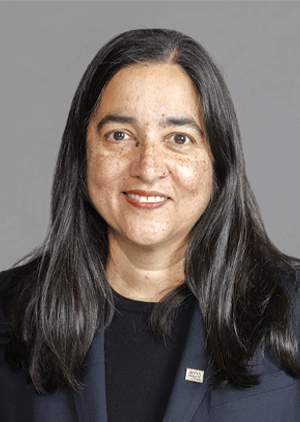RSNA Government Relations Committee Amplifies Radiology's Voice
Committee works to address challenges in radiology and gain insight into gaps in care

This past March, through an event hosted by the Academy for Radiology and Biomedical Imaging Research and in my capacity as RSNA Board liaison for government relations, I visited the offices of several senators and representatives on Capitol Hill in Washington to advocate for research and federal funding.
We were guided by Elizabeth O’Hare, RSNA director of government relations. She let us know what to expect and shared tips and best practices for meeting with congressional staff. The House and Senate office buildings were packed. We met with congressional staff members in offices, hallways, and even a cafeteria. We spoke about patient care and innovation, covering topics ranging from artificial intelligence (AI), theranostics, and population health, to the evolution and promise of our field. Staff in each office, whether Democratic or Republican, were kind and welcoming. Some congressional staff had an exceptional understanding of our field; all were engaged and curious. Some shared concerns—how can we be confident that AI algorithms truly benefit people and don’t have a hidden agenda? What can be done to increase trust? Uniformly, the staff expressed a commitment to research and innovation in our field.
Over the past two years, I have been helping to develop a government relations strategy for RSNA. I am indebted to those who are beginning this journey with us—Dr. Pedram Heidari, who chairs the RSNA Government Relations Committee, and a group of incredible radiologists and RSNA staff members who have helped to shape our goals and committee charge. In this work, we will introduce our voice, our ideas and our commitment to innovation and health to groups who may not know us yet, who may have less knowledge about our field, or whose world view may be very different. I believe these connections to be critically important. They not only provide a forum for us to directly and openly share current progress and challenges in radiology, but they also help us to gain greater insight into gaps in care and needs across communities. We will better learn, as a field, what we are missing. And, importantly, we will be able to contribute our knowledge and insights to inform pressing societal challenges.
Our goals include:
• Establishing relationships with key federal stakeholders
• Strengthening the voice of radiology with governmental agencies with a focus on patient care and innovation
• Ensuring that RSNA members have the resources to communicate effectively with communities and decision-makers, and to obtain federal funding, as appropriate
• Educating RSNA members about government relations and empowering them to serve as a voice for our field
To execute these goals, we have formed technology and practice, research, and education and engagement subcommittees. Notably, advocacy for reimbursement is not within our committee’s scope at RSNA.
In the coming months, the committee will focus on the regulatory environment related to AI. We are excited to move this work forward. In the future, our success will be measured by both the impact we have and the experience we gain, the latter ensuring that we can advocate for our patients and for innovation in our field as effectively as possible in the many years to come.
For More Information
Visit RSNA's Government relations.
Read previous RSNA News stories on advocacy-related topics: